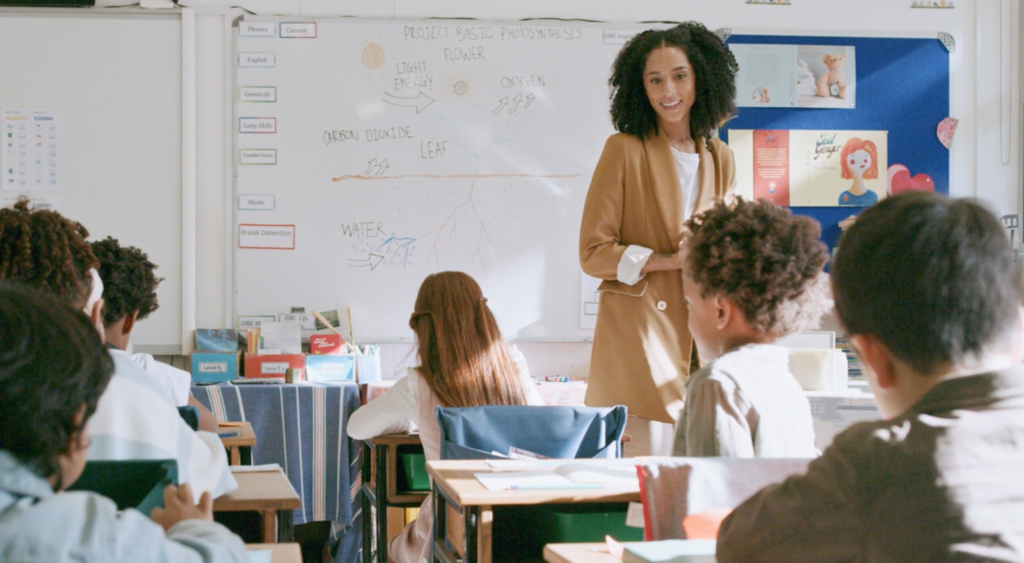Types of tutors: in class, 1:1, small group, virtual.

School districts use different types of tutors in various learning environments to advance learning and help students achieve success.
Common types of tutors in schools:
- classroom tutors
- 1:1 tutors
- small group tutors
- virtual tutors
Which students require tutoring?
Many students require the assistance of a tutor in their educational lives. Some are placed in tutoring after performance on standardized testing indicates they are falling behind and need support in basic concepts that impact scaffolding. Others may ask for it themselves when struggling with the introduction of new or challenging concepts.
Other students may be identified with specific learning disabilities and have an Individualized Education Plan (IEP). These students may also have a special plan and a paraeducator to support extra interventions for success.
In-class tutoring jobs.
Students may receive tutoring in class. Sometimes, this type of tutoring is called “push-in” tutoring. In-class tutors may be asked to do any of the following:
- Work with individual students or small groups to reinforce skills to allow all students higher levels of understanding.
- Understand any accommodations and modifications for those who require it. may include reading passages aloud to students, highlighting specific vocabulary words, lining up math problems, or paraphrasing information.
- Reteach the lesson. This may include paraphrasing information or providing visual graphs or notes to clarify what was initially presented. Explaining information in a different way solidifies concepts, helping students move from a shaky foundation to mastery.
- Be flexible in observing students and changing the presentation if they are not catching on. Find ways to explain lessons using multimodal resources and activities, like visual, auditory, and kinesthetic. This engages different areas of the brain to drive students to master difficult concepts.
1:1 or small group tutoring in a pull-out learning environment.
Some students require pull-out services in an environment outside the classroom. For students requiring a more direct instruction tutoring model, assignments may be modified to meet individualized learning goals. In other words, meet the students where they are. In the one-on-one or small group, you may be asked to:
- Find resources and materials to support a learning objective.
- Teach a specific lesson outlined in a student’s learning plan or IEP.
- Reteach a lesson originally presented in the general education setting.
- Provide a quiet, structured environment to promote attention to the lesson.
- Offer verbal guidance and reinforcement as students complete assignments.
- Use visual charts, pictures, or videos to explain concepts.
- Reinforce positive behavior and work completion.
These are a few options for pull-out tutoring lessons. It’s important to remember that students who need one-on-one support will benefit from your empathy and positive attention as you guide learning during your tutoring sessions.
Virtual tutoring.
Technology has created new, innovative opportunities for in-school tutors. When students are not physically present, continuing to provide effective educational services can be challenging. However, video and virtual platforms make learning in alternate settings possible and productive. Tutor duties might include face-to-face support through virtual meetings, whiteboard support, webinars, or team chats.
For a tutor with higher technology proficiency, these skills are invaluable to educators who support students from these platforms. Even in these virtual environments, the support strategies are similar to all those mentioned above in more traditional structures.
Empathy, rapport, and positive guidance are key. Students who feel supported and honored as people work harder and cooperate better with their teachers in any environment. Authenticity and warmth come through in a traditional or virtual classroom.
Tutoring is teaching.
Tutoring services are as critical as traditional classroom teaching. Tutors can be the difference between a student grasping a concept or remaining lost in the larger group setting.
Building rapport with students and finding innovative ways to teach concepts can make you an invaluable asset for individual student success.
Grow your tutoring skills with Kelly Education.
If you need more resources about tutoring, we have an entire library of helpful articles for tutors and school educators. They include:
Additionally, if you or someone you know is interested in substitute teaching jobs or fulfilling tutor duties, fill out our brief interest form, and one of our recruiters will contact you to answer your questions. We’ll also share more about opportunities to become a substitute teacher or support staff with one of our school district partners.

View Related: Article Job searching
You might like
Education Hiring Event – Aurora Public Schools
< 1 minute read
Nov. 11 | Aurora, Colorado
Education Hiring Event – Ascension Parish School District
< 1 minute read
Nov. 5 | Ascension Parish, LA
Education Hiring Event – Louisiana School Districts
2 minute read
Nov. 5-7 | Louisiana School Districts
Education Hiring Event – Aurora Public Schools
< 1 minute read
Nov. 11 | Aurora, Colorado
Education Hiring Event – Ascension Parish School District
< 1 minute read
Nov. 5 | Ascension Parish, LA
Education Hiring Event – Louisiana School Districts
2 minute read
Nov. 5-7 | Louisiana School Districts
Find your next job
Discover thousands of temporary, full-time, and remote jobs for beginning and experienced job seekers.


